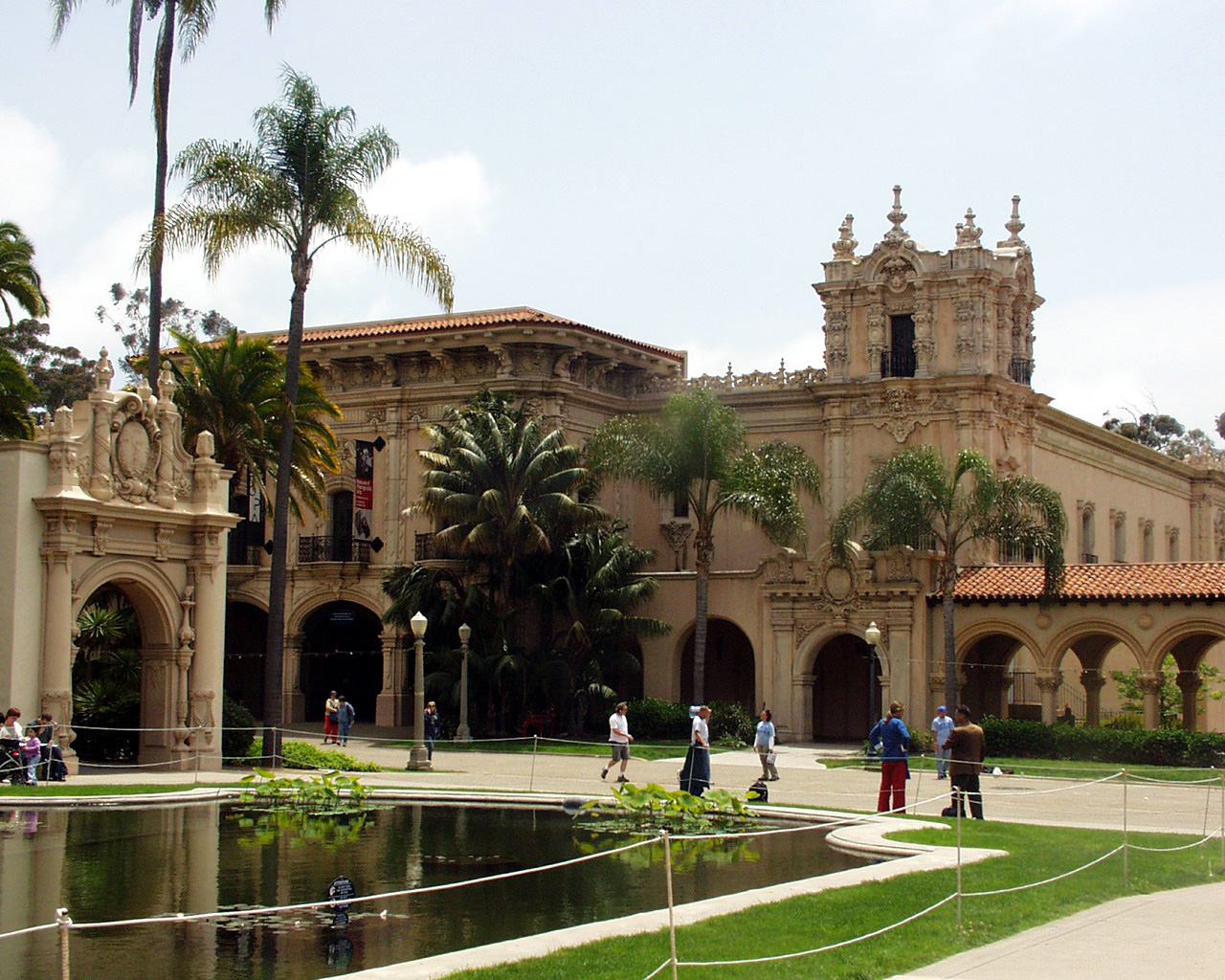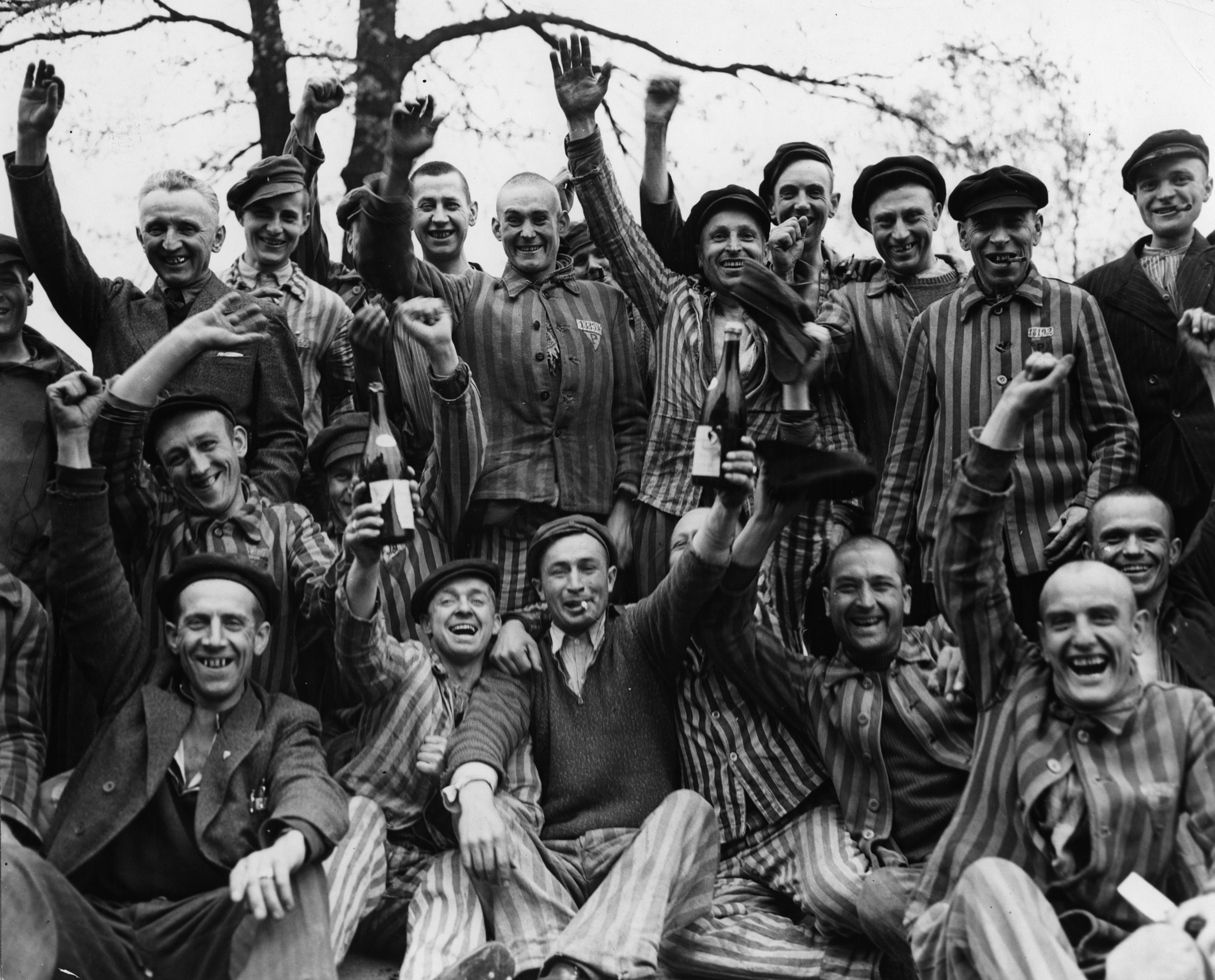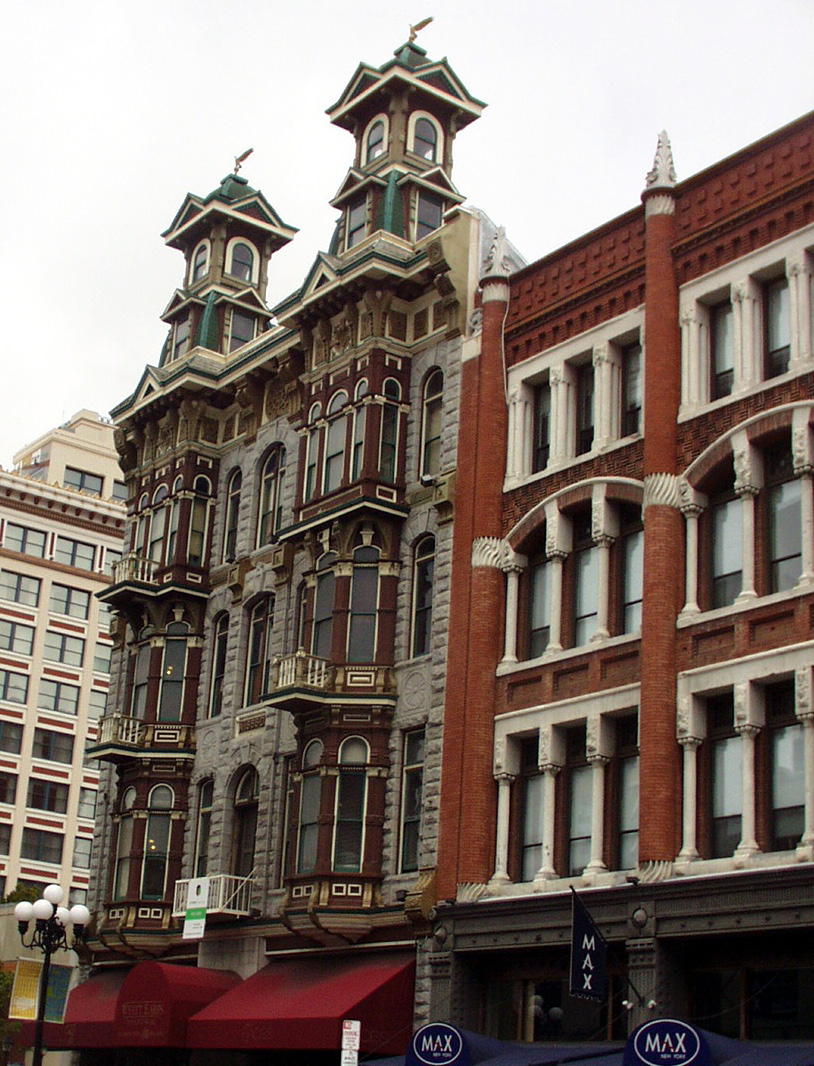|
By Donald H. Harrison
SAN DIEGO, Calif.— I'm not sure if anyone clued in the passengers aboard Royal
Caribbean Cruise Line's Monarch of the Seas or aboard Holland America
Line's Veendam when those two ships came into port today, but the biggest
bargain on San Diego on Tuesdays is Balboa Park.
As the 1,400-acre park's landlord, the City of San Diego requires the numerous
museums occupying the cultural heart of San Diego to apportion the first four
Tuesdays of any month in such a way that on any given Tuesday, some of the
museums are open for free. If you visited Balboa Park on four
Tuesdays in a row, and you were quick about it, you could visit every museum in
San Diego without having to pay anything for the privilege.
 The
museums occupy the refurbished and rebuilt Spanish Colonial buildings that
served as the chief venues at world expositions conducted in 1915 and 1935
when San Diego was trying to draw attention to itself and its deep water port as
an ideal area for handling imports and exports for countries on the rim of the
Pacific Ocean. The
museums occupy the refurbished and rebuilt Spanish Colonial buildings that
served as the chief venues at world expositions conducted in 1915 and 1935
when San Diego was trying to draw attention to itself and its deep water port as
an ideal area for handling imports and exports for countries on the rim of the
Pacific Ocean.
Set among luscious gardens, broad walkways, reflecting pools and fountains, the
museums offer an ever-changing tableau of exhibitions that keep San Diegans and
visitors coming back each year by the millions.
Free today were the exhibitions at the Museum of Photographic
Arts and at the San Diego
Pedestrians pass between reflecting pool and Casa de
Balboa
Museum of History, which are both housed in the Casa de Balboa. In each museum,
there were Jewish threads sewn into the tapestries of the
exhibitions.
For example, the photographic arts museum's current exhibitions show the work of
some photographers who were early to use the 35 millimeter camera, including
Alfred Eisenstaedt and Erich Salomon, both of whom were German Jews. That
exhibit is a companion to the currently featured exhibit, "Breaking the
Frame: Pioneering Women in Photojournalism," in which the public is treated
to a representative sampling of the works of photographers Therese Bonney,
Margaret Bourke-White, Esther Bubley, Olga Lander, Hansel Mieth and Grace
Robertson.
Several of Bourke-White's photos deal with subjects of direct Jewish interest
such as a Talmud class in Czechoslovakia in 1938; cheering inmates following the
liberation of a concentration camp at the end of World War II, and a former
concentration camp inmate grieving near an emaciated corpse at a Nazi work camp
in Leipzig.

Margaret Bourke-White, Concentration Camp Internees Cheer, 1945,
gelatin silver print, courtesy of Cam and Wander Garner, copyright (c)
Getty-Time/Life, is included in exhibit at the Museum of Photographic Arts
through Sept. 24
Bourke-White, in 1936, became the first woman to become a staff photographer for
Life, and Mieth followed her to the magazine two years later. Bonney took
World War II era photographs in France; Lander accompanied Soviet troops through
much of the war, while Bubley and Robertson took highly evocative photographs of
every day life respectively in the United States and England.
In the companion exhibit, at which Eisenstaedt's photograph of crewmen tethered
to hooks atop a Zeppelin in flight over the Atlantic, graces the entry way, we
see the great talent with which both Eisenstaedt and Salomon documented European
life in the years before Adolf Hitler's election as Germany's chancellor in 1933
and the imposition of the anti-Semitic laws that led to Eisenstaedt's exile and
Salomon's murder in Auschwitz.
Among works by Eisenstaedt in the exhibit running through September 17 are
"Paris Street Musicians, 1930" and "Destitute Man Near Les Halles
District, Paris, 1931" as well as "Benito Mussolini Giving
Speech From Balcony, Venice, Italy, 1934," The latter shows the
Italian dictator raising his hand, with a finger pointing skyward, speaking from
a draped balcony. On the adjoining balcony are soldiers, paying various
varieties of attention to Il Duce. Above the soldiers in a strange
juxtaposition are figures of women carved into the building.
Salomon's works are represented by a series of photographs capturing Heinrich
Bruning, chancellor of Germany under the Weimar Republic, at various diplomatic
meetings in Europe before and after he was in power. The most interesting
of these shows Bruning with his back to the camera, gesturing, as he makes a
point in a seemingly intense conversation with cigar-smoking Edouard Herriot,
the former French prime minister.
Down the hall from MOPA is the entrance to the Museum of San Diego History which
also has several concurrent exhibitions, including an imaginative one
introducing children through a variety of interactive exhibits to the history of
Balboa Park.
 The
exhibit, "From Blueprints to Buildings: San Diego Architecture"
includes among numerous other examples, three pieces of architecture with
distinct Jewish histories: the Louis Bank of Commerce, built in 1888; the
Melville Klauber home, constructed in 1909, and the Salk Institute, designed in
1965. The
exhibit, "From Blueprints to Buildings: San Diego Architecture"
includes among numerous other examples, three pieces of architecture with
distinct Jewish histories: the Louis Bank of Commerce, built in 1888; the
Melville Klauber home, constructed in 1909, and the Salk Institute, designed in
1965.
"Entrepreneur Isidor Louis hired architect Gustavus Clements and John
Stannard to design the first granite building in the area," according to
the museum. "The structure housed the Bank of Commerce and later an
Oyster Bar which was a favorite of Wyatt Earp. The upper floors later
became the Golden Poppy Hotel, a notorious brothel. In 1947, Ratner
Electric moved into the building, establishing it as a house of a thousand
lights."
Louis and the Ratners were members of the Jewish communities of their eras, and
Earp—famed as the marshal of Tombstone, Ariz., who had a shoot-out at O.K.
Corral—was married in his later life to Sarah Marcus (known as Josie Earp)
accounting for
Louis Bank of Commerce Building
why he is buried in the Northern California Jewish cemetery near
Colma, despite the fact that the gun-slinging lawman was not a Jew.
The residence of Melville Klauber was designed by well-known San Diego
architects Irving J. Gill and Frank B. Mead in the Banker's Hill neighborhood
near downtown. Unlike the twin-tower Louis Commercial Bank Building (seen
above) the Klauber home no longer stands today. "Melville Klauber was
regarded as a businessman and civic leader," the museum's story board
instructs. "He was the son of Abraham Klauber, who began the
Klauber-Wangenheim mercantile business. Later Melville took the business
over from his father.. The Klauber residence was a major turning point in
Irving John Gill's career. It was lauded as one of the finest homes in San
Diego when the home was still in its planning stages."
The Jonas Salk Institute for Biological Studies was identified by the curators
of the history exhibit as an example of an architectural style known as
"brutalism." Architect Louis I. Kahn's architectural
achievement, "built on the Pacific Coast is as magnificent as the work that
occurs inside the Salk Institute," in the museum's estimate.
"The Salk Institute is as much an experience as it is a
building. Visitors enter the complex through a miniature grove of citrus
trees that lead into the broad plaza between twin research and laboratory
wings. Eyes are drawn to the spectacular view of the Pacific Ocean and the
coastline by a simple contemplative water feature.
"Brutalist buildings, like the Salk Institute, have a look of heavy weight
and solid massiveness. Structure is emphasized or frankly exhibited. Concrete is
the favorite construction material and is used as the exterior finish of the
building. Concrete block or brick may also be used. Openings are
treated as holes or slits in the solids of the walls with emphasis on deep
shadows and voids."
Another example of "brutalist" architecture, according
to the museum, is Qualcomm Stadium, which previously had been known first as San
Diego Stadium, and later as San Diego "Jack Murphy" Stadium, after a San
Diego Union-Tribune sports writer who helped to lure the Chargers football
team to San Diego from Los Angeles. More recently, naming rights for
the Super Bowl 2003 site were purchased by Qualcomm—a telecommunications
company co-founded by two members of San Diego's Jewish community, Irwin
Jacobs and Andrew
Viterbi.
|

